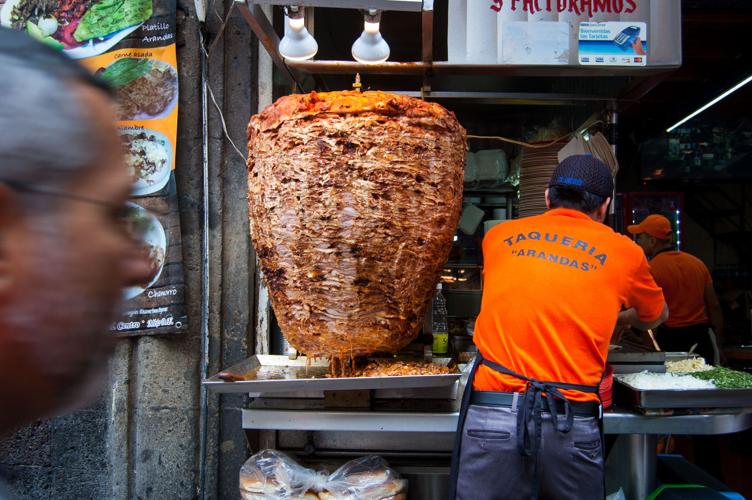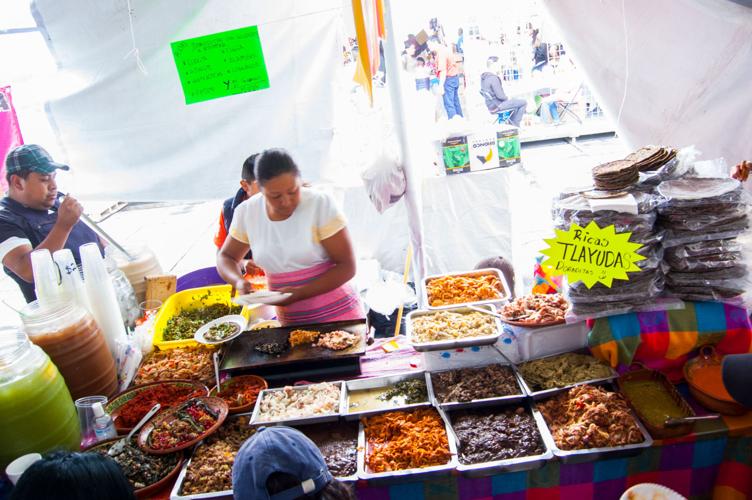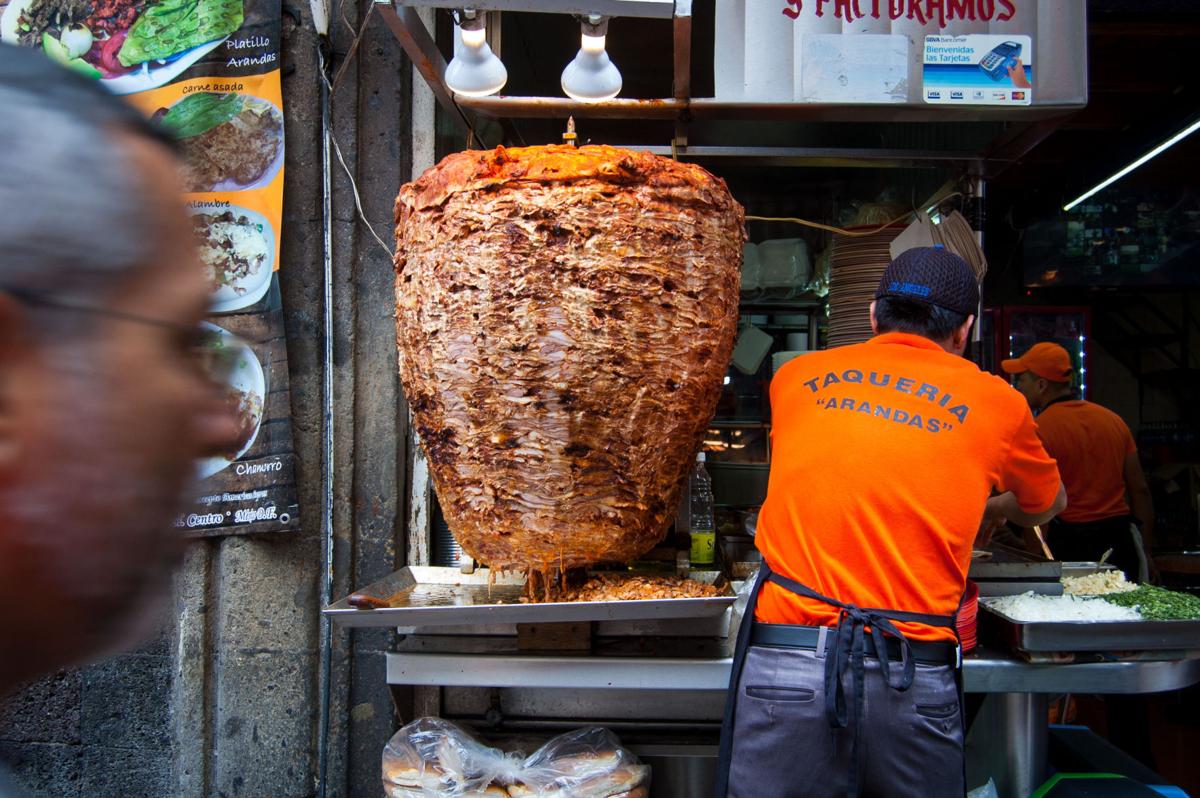Instead of tubing down the Salt River, I spent my Labor Day burrowing through the biggest city in Latin America, where burritos are nearly a myth and 18th century basilicas point sideways toward mazes of people selling charred corn.
Sounds pretty romantic, but I was actually traveling alone because I found a last-minute American Airlines flight for $380. I flew out from Tucson on Friday and had to be back to work by Tuesday. In between, I saw two museums and one of the largest murals in the world, walked the staggering Chapultepec park, took a boat through ancient Aztec canals and saw Frida Kahlo's neighborhood Coyoacan.
I ate most of my meals on the street, which was faster and I believe, tastier. I wanted to share with you some of the things I encountered, because the experience really changed how I think about Mexican food and what makes Arizona's cuisine unique. Other than chimichangas.
I apologize ahead of time for A) not being a real expert, and B) not getting names, prices and exact locations. I wasn't taking notes, because I was on vacation ...

Al Pastor tacos from the porky playground Tacos Arandas, which also served pig uterus tacos de nana.
On my first full-day, I set out from the Hostel Mundo Joven Catedral on the fringes of the city's main Zocalo square, and walked west down the bustling Avenida Cinco de Mayo. I was looking for a bank, but got a little sidetracked by the massive spinning trompo of vermilion red pork meat (pictured up top).
Health department regulations have made this porcine spectacle a rare site in Tucson, but not even in Sonora have I seen a trompo this enormous. Central Mexico is the home of al pastor. It's a fusion food inspired by the shawarmas of Lebanese immigrants. Somewhere in the city you can find tacos arabes wrapped in pita bread, but I was content with these flawlessly suave corn tortillas, at this point the best I've ever had.

Wasn't sure what to expect when I ordered a sausage taco in what looked like a circus tent ...
Walking further west past the Palacio de Bellas Artes, I happened upon a swapmeet style market straddling the Alameda Central park. Several vendors had big plump sausages strung from their stands, so I sat down and tried one in taco form. It was longaniza, a pork sausage that's similar to chorizo but a tad drier and intensely spicy. The taquero chopped it up into tiny little crumbles and tossed them on the flattop until they had an addicting salty crunch.

Where's a movie theater when I need one?
I also saw these chips there. I didn't get one, but what the heck. Green Cheetos???

I'm really into the little ones that look like birds' nests.
While I'm at it, here are some candies I saw nearby. Mexico City vendors have a flair for sweets, and the varieties were countless and inspiring. FYI, those flag colored candies are probably there because Mexican Independence Day is coming up on Sept. 16. Red, white and green is the new black around here.

That's corn fungus popping out ... It's springy and tastes like rain.
Quesadillas are known far and wide (in London pubs I've seen them with tzatziki sauce), but this is new. The cook takes a huge block of white Queso Oaxaca and rips off a few strings one by one. Then he stuffs it into the tortilla along with a spoonful of huitlacoche, a springy corn fungus that we estadounidenses consider a delicacy. (Apparently it's really common in Mexico City, and cheap too.) The quesadilla tastes like melted string cheese with mushrooms.

The woman in the back was pressing the tortillas right in front of me.
And then there's this one, also called a "quesadilla" by my chef. The freshly-pressed corn tortilla is fried in the oil, while a man crunches under the stove and fans off the smoke from the coals. My quesadilla was stuffed with those delicate squash blossoms you see in the summertime. Before they gave it to me, they split it open lengthwise and filled the center with shredded white cheese and green salsa. I ate it next to a plant, watching a Mexican street clown sing Juan Gabriel songs.

This vendor had spectacular salsas, especially the verde that tasted fresh with the acidity from raw tomatillos.
A few feet away I spotted a guy taking wet meat out of a tub and chopping it on a big wooden block that looked like a log. I sat down at his table, and he made me up a taco with barbacoa de borrego, succulent lamb meat that he'd been steaming in sweet banana leaves. I think I started to tear up at this point, but it may have been the clown music.

This is a pretty common site: A vendor sets up half a dozen silver trays with various meats and guisado stews.
I was lucky to arrive during a massive festival of indigenous cultures, where hundreds of vendors set up in stately white tents that spanned the entire Zocalo plaza. The picture above was taken in one of the food tents, which was dominated by Oaxacan people selling moles and fresh white cheeses and meat stews from silver tubs.

There really is nothing like watching someone cook your food, and then eating it.
I ended up eating this creation, which put me out of commission for several hours. (I could still explore, just no more food.) It's a tlayuda, the famous Oaxacan cheese crisp made from a large corn tortilla baked in an oven. Even the chico size was massive, rubbed black bean paste and fatty asiento pork lard, then smothered with cheese, avocados, tomatoes, beef strips and vibrant red chorizo. This is only the second tlayuda I've had, but I wasn't aware they could fold them in half. This makes it easier to eat with the velvety puree of chile de arbol salsa.

I bought this michelada from a woman paddling by. She prepared it on her little boat and handed it over to me.
Not everything I ate/drank was on the street. After that tlayuda, I took the blue metro line south to the last stop. Then I took a bus to its last stop. Then I walked ... through a little town to a lake of colorful trajinera boats each decorated with people's names.
Xochimilco is the last living example of the city's ancient waterway system, before Spanish settlers filled in the massive lake and built Mexico City on top of it. Xochimilco is a famous tourist stop, but while there I mostly saw Mexican families who were renting out the boats to drink and eat together, dancing to mariachis who floated by playing Vicente Fernandez tunes.
I was all alone, but right as I was negotiating with the boat guys, I heard a male voice say the words in English: "I don't even know where we are right now." I turned around and saw a stylish couple about my age, one from Mexico and one from Brazil. We quickly made friends, and rode the boat together and drank micheladas from blue paper cups. Afterwards, we took a cab toward Coyoacan to see a mural. Then for the first time on my trip, I ate dinner in a restaurant!















